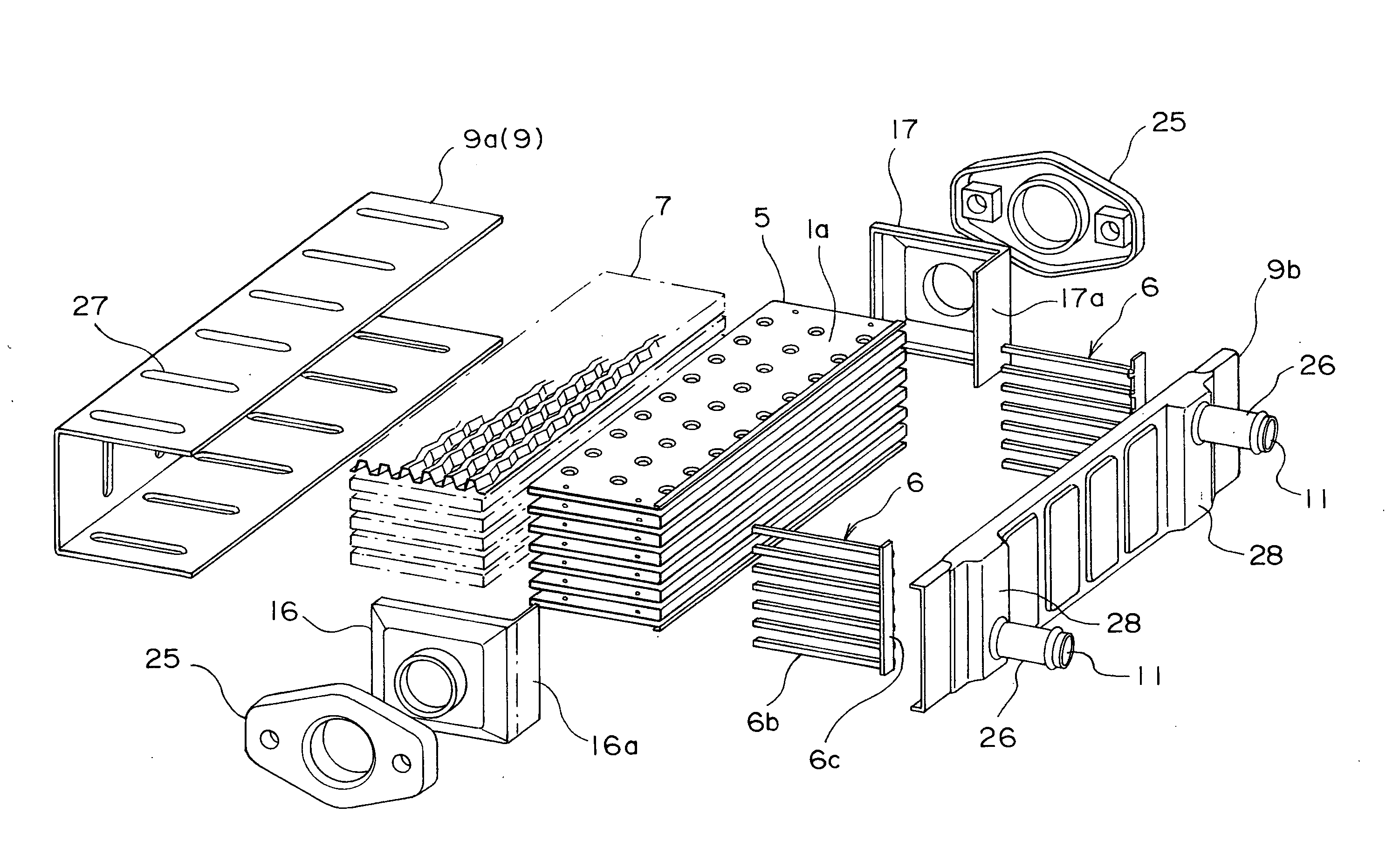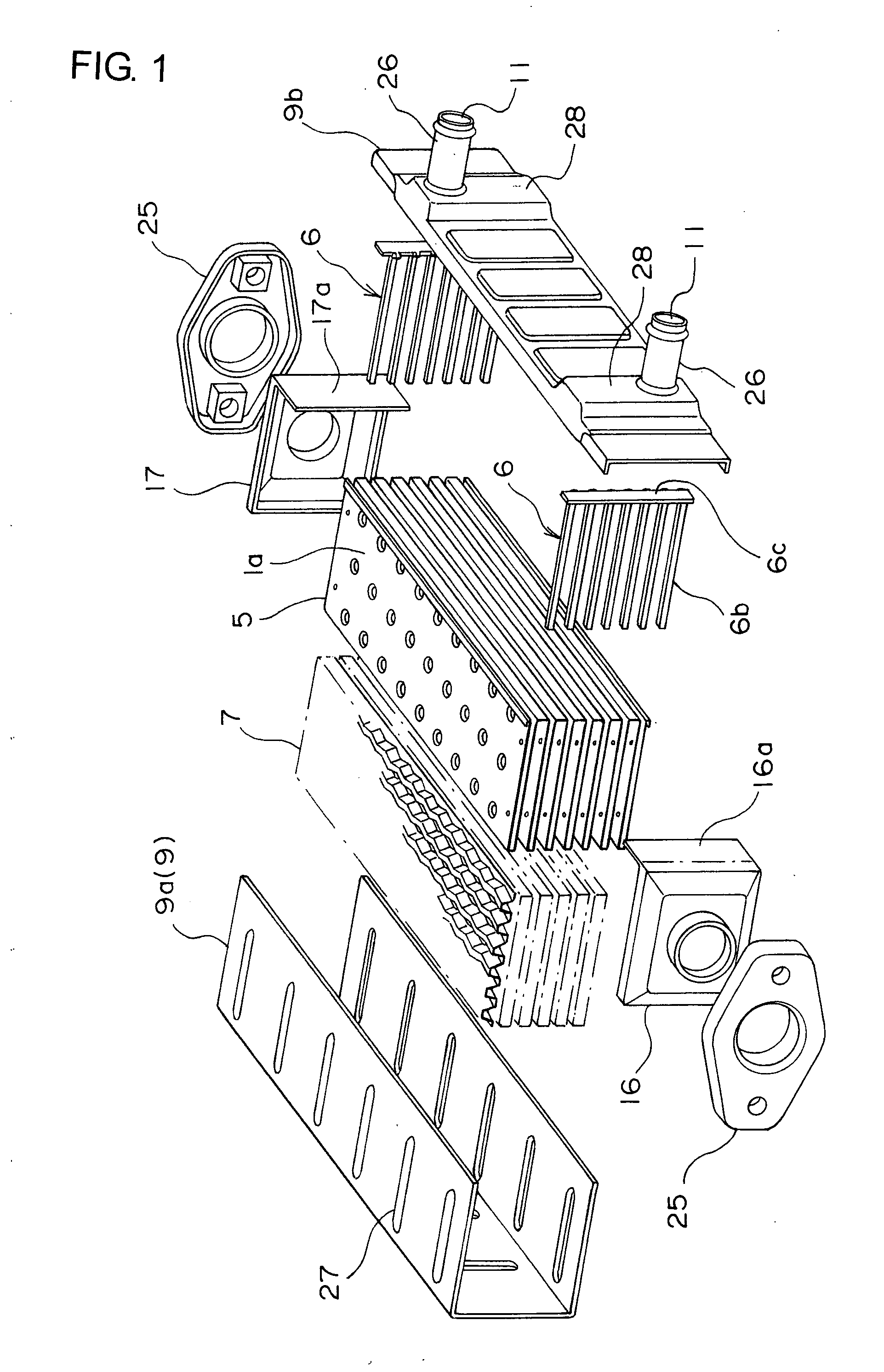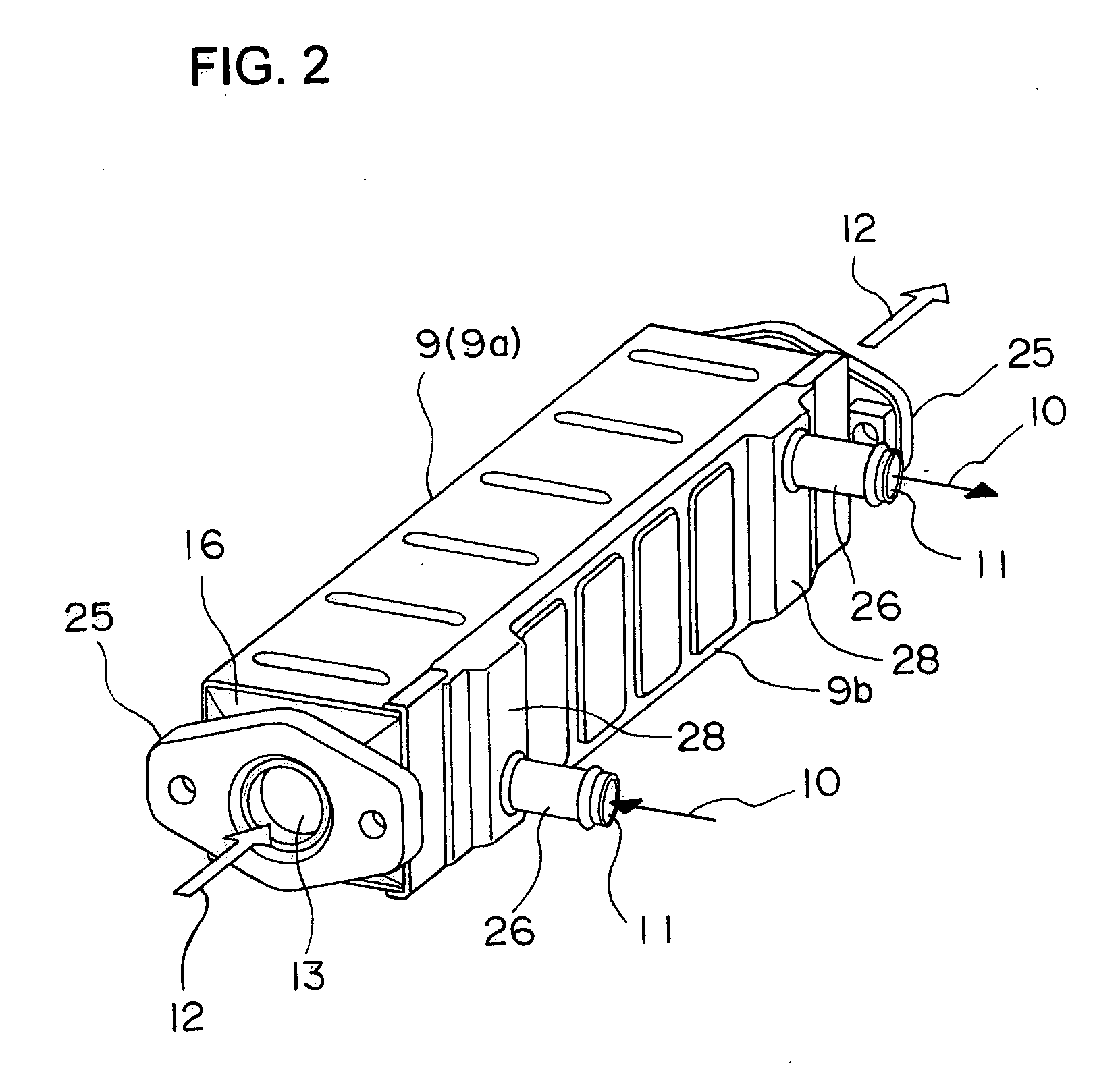Heat Exchanger
a technology of heat exchanger and heat exchanger plate, which is applied in the direction of light and heating apparatus, machines/engines, laminated elements, etc., can solve the problems of increasing the number of brazing portions on the parts, increasing the number of brazing portions, and prone to leakage at the brazing portion, etc., to eliminate the gap, reduce the number of leakages, and reduce the number of cracks
- Summary
- Abstract
- Description
- Claims
- Application Information
AI Technical Summary
Benefits of technology
Problems solved by technology
Method used
Image
Examples
Embodiment Construction
[0034]Next, embodiments of the present invention will be described based on the attached drawings.
[0035]FIG. 1 is an exploded perspective view of a heat exchanger of the present invention, FIG. 2 shows its assembled state and FIG. 3 is an explanatory view of an assembly of a core body 5 and a comb-state member 6. Also, FIG. 4 is a perspective view of the comb-state member, FIG. 5 is a partially cutaway enlarged perspective view illustrating the assembled state, and FIG. 6 is a perspective view of the assembled state.
[0036]Moreover, FIG. 9 is a cross sectional view of the heat exchanger and FIG. 10 is an enlarged view of IX part of FIG. 9.
[0037]This heat exchanger has a core body 5, a large number of fins 7, a casing 9, a pair of headers 16, 17, and the pair of comb-state members 6.
[0038]The core body 5 is formed by turning up and bending a strip-shaped metal plate in a fanfold manner as shown in FIG. 3 so that turned-up end edges 1, 2 are formed alternately at one end and the other ...
PUM
 Login to View More
Login to View More Abstract
Description
Claims
Application Information
 Login to View More
Login to View More - R&D
- Intellectual Property
- Life Sciences
- Materials
- Tech Scout
- Unparalleled Data Quality
- Higher Quality Content
- 60% Fewer Hallucinations
Browse by: Latest US Patents, China's latest patents, Technical Efficacy Thesaurus, Application Domain, Technology Topic, Popular Technical Reports.
© 2025 PatSnap. All rights reserved.Legal|Privacy policy|Modern Slavery Act Transparency Statement|Sitemap|About US| Contact US: help@patsnap.com



